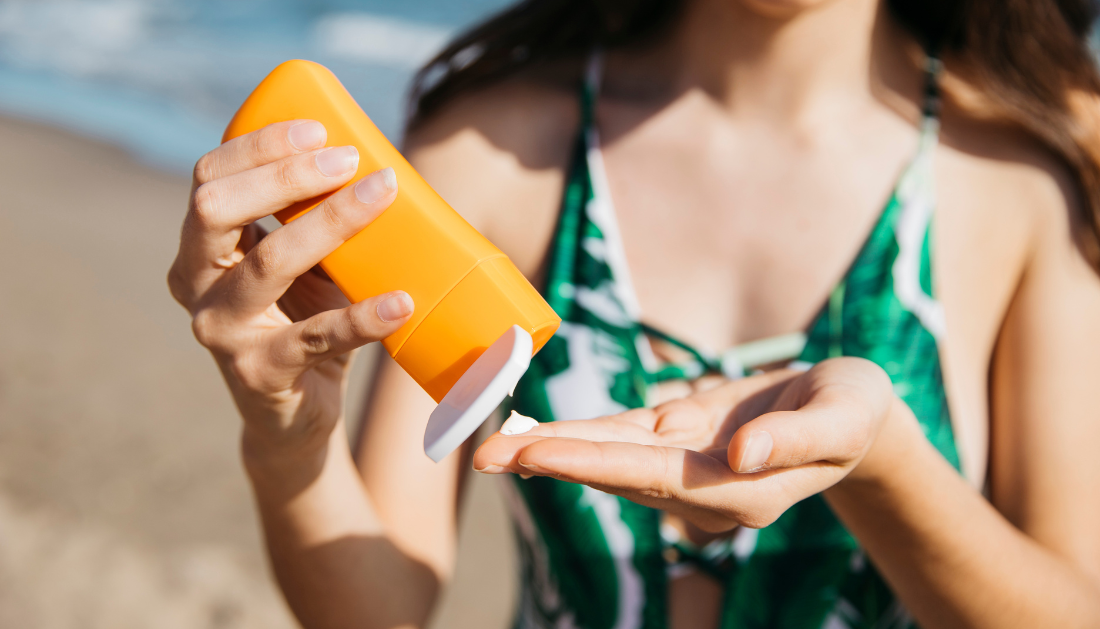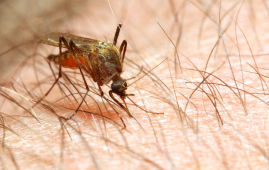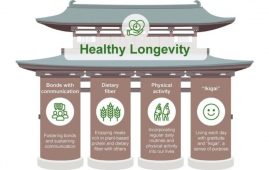

It is commonly recognized that ultraviolet (UV) radiation from the sun can seriously damage skin. However, most people are unaware that certain everyday items and drugs can increase our vulnerability to sunburn and other negative side effects.
“There are multiple reasons we should be mindful of excessive sun exposure aside from skin cancer, although that’s certainly important. There may also be some external factors that can make us more sensitive to sunlight.”- Kaveh Nezafati, MD, Assistant Professor, Dermatology, University of Texas Southwestern Medical Center
Photosensitivity symptoms commonly manifest as rashes, itching, inflammation, sunburn-like symptoms, and skin irritations; while these usually go away on their own, prolonged exposure to UV light may increase the risk of long-term damage or skin cancer. Dr. Nezafati provided guidance and an explanation of how our daily routines and surroundings can increase our susceptibility to the sun’s harmful rays.
Examining the medication’s label warnings
The U.S. Food & Drug Administration states that certain medications, whether oral, topical, or injectable, contain chemicals that may cause a physical reaction when the skin is exposed to UV rays. The dosage and length of time spent outside or in the tanning booth determine the reaction’s intensity and speed.
Dr. Nezafati gave the standard example of blood pressure drugs like hydrochlorothiazide. “Basically, what happens is the ultraviolet radiation reacts with the medicine circulating in the patient’s blood, converting that drug into a chemical byproduct that can directly damage skin cells and cause sunburns,” he explained.
According to him, ciprofloxacin and doxycycline are two examples of antibiotics that function similarly and can cure a variety of diseases.
“The most important thing is for patients to be aware of the side effects of the medications they are taking and to be vigilant if they need to take extra precautions as a result.”
Considering beauty products
Social media has caused a huge surge in the popularity of skin care regimens, and salves, ointments, and lotions are widely available. People might not be aware that cosmetic creams and related things can make them more photosensitive, according to Dr. Nezafati. He also mentioned over-the-counter items like skin exfoliants and retinol serums.
Look for antiaging chemicals like beta and alpha hydroxy acids on product labels, as these might make skin more sensitive and sensitive.
“These exfoliants help remove the top layer of dead skin cells to smooth and brighten the complexion, but that makes it easier for UV radiation to penetrate the skin,” explained Dr. Nezafati.
While sunscreen is now found in many makeup brands, most individuals don’t wear as much of it as they should to provide adequate protection. Rather, the best way to protect yourself from the sun is to wear a layer of sunscreen underneath cosmetics. To obtain the best coverage, Dr. Nezafati advises selecting one with a sun protection factor (SPF) of at least thirty.
Steer clear of “margarita burn”
Another item that might cause a harmful skin reaction is lime, which is a common ingredient in kitchens and bars.
“Furocoumarins are chemical compounds found in certain plants,” Dr. Nezafati said. “UV rays activate this chemical when it comes into contact with our skin and cause cells to be destroyed. The most frequent cause of this in Texas, given our diet and local fauna, is lime juice.”
Known as the “margarita burn” because the popular cocktail is sometimes served with a wedge of lime, phytophotodermatitis is a phototoxic reaction that can result in blisters filled with fluid, swelling, and itchy rashes. Symptoms usually appear one to two days after exposure and can linger for several days. When lime juice comes into touch with the skin and is exposed to the sun, it can cause painful and irritating skin lesions that frequently leave dark discolored streaks.
Other citrus fruits that can cause phytophotodermatitis include grapefruit and lemons, in addition to limes. One study also detected furocoumarins in parsley, celery, parsnips, carrots, and cilantro. Washing your hands after handling these materials and covering your skin are the best preventative measures.
“After it breaks out, there’s little to do but let it run its course,” said Dr. Nezafati, who advises people to avoid popping blisters and recommends an over-the-counter cortisone cream to help with itchiness and irritation. “Most cases are mild and only require gentle wound care. You just have to wait for the skin to exfoliate and heal on its own.”
Four suggestions to enjoy nature without getting burned
Use a lot of sunscreen: For an adult’s body, a general rule of thumb is two tablespoons, or one ounce. Every time you step out of the pool or take off your towel, reapply.
Select SPF 30 broad-spectrum: It offers defense against UVA and UVB rays, which can both cause skin cancer.
Put on long sleeves: UPF (ultraviolet protection factor) sun shirts can help filter UV radiation.
Stay off of tanning beds and seek shade: Reduce your exposure to UV light from both artificial and natural sources.
Source Link: University of Texas Southwestern Medical Center
more recommended stories
 Ultramarathon Physiology: What HCPs Should Know?
Ultramarathon Physiology: What HCPs Should Know?Ultramarathon Metabolism: What Happens to the.
 High-Intensity Training and Oxidative Stress Insights
High-Intensity Training and Oxidative Stress InsightsNew Evidence Linking High-Intensity Training and.
 Sterilized Fermented Beverage for Obesity: New Evidence
Sterilized Fermented Beverage for Obesity: New EvidenceEarly Insights Into a Sterilized Fermented.
 Cardiovascular Risk and Sudden Cardiac Death in Diabetes
Cardiovascular Risk and Sudden Cardiac Death in DiabetesRising Sudden Cardiac Death (SCD) Risk.
 Perinatal Mental Health Challenges Highlighted in New Study
Perinatal Mental Health Challenges Highlighted in New StudyMental Health Challenges in New Parents:.
 Walking Speed Before Hip Replacement Predicts Recovery
Walking Speed Before Hip Replacement Predicts RecoveryNew Evidence Points to a Simple,.
 How Soybean Oil Impacts Weight Gain and Metabolism
How Soybean Oil Impacts Weight Gain and MetabolismWhy Soybean Oil May Affect Metabolism.
 New Malaria Prevention Insights From African Biostatistics
New Malaria Prevention Insights From African BiostatisticsHow New Data Is Reframing Malaria.
 World Summit Outlines Core Principles for Healthy Longevity
World Summit Outlines Core Principles for Healthy LongevityWhy Healthy Longevity Demands a New.
 Gut Immune Cells and Long-Lasting Antiviral Protection.
Gut Immune Cells and Long-Lasting Antiviral Protection.Breakthrough Findings on How Gut Immune.

Leave a Comment